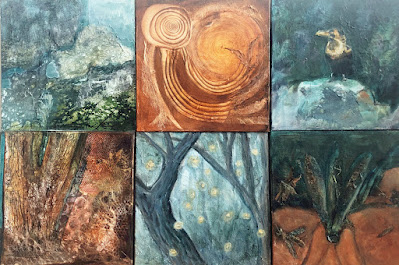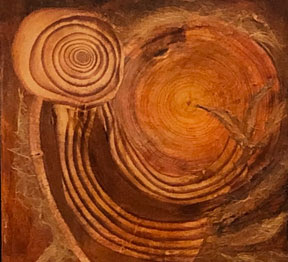I learned something I didn’t know or a new way of looking at the world.
Fiction needs to engage me in story, but rather than validating or explaining an outer world, it often gives me insight into an inner world. It may open me up to someone else’s experience and perhaps allow me to recognize something that echoes in my experience as well.

Hamnet (2020) by Maggie O’Farrell is a beautiful book in both words and story. By judicious use of both, it becomes something more, an elegy on grief. Based on the outline of Shakespeare’s life, its focus is on his wife and the death of his son at age eleven. O’Farrell studies the white space around the few details that we know and enlarges the story, adding elements that support the rich emotional content of these events. The language is lush and evocative, achingly beautiful and often poetic. If it were just that, it would be enough, but it builds to an ending that releases that emotional energy in yet an additional level of artistry.
Afterlife (2020) by Julia Alvarez is aptly named. It follows the life of Antonia after the death of her husband. The afterlife is both Antonia’s and that of Sam, her late husband, as she channels who he was in relationship to her. It explores the nature of a relationship where we each assume roles in relationship to those of our partner. Sam was the good cop leading with the charitable gesture, leaving her the part of the vigilant one, the bad cop, assuring that they weren’t taken. It was a role she resented a bit. “Why not two good cops, “ he had once proposed.
 Now alone, she is painfully aware of the actions Sam would take when she finds herself in a situation that requires extending herself to help a young immigrant woman. She feels for her familiar boundaries even as she considers how Sam would respond, trying his behaviors on as her way of honoring who he was. Part of her resists this unfamiliar way of being. Everything is now thrown into question without that counterbalance of Sam, as she begins to redefine who she is in this new moment. There are wonderful insights in this book and Antonio invites us into her musings. In her moments of gratitude for a person Sam brought into her life, she muses “is there an expiration date on the tendrils of a gratitude after the mother root has expired?" In addition to Sam there was another story thread that resonated with me, the relationship with her sisters and the memory they preserve collectively of their late mother, yet another afterlife.
Now alone, she is painfully aware of the actions Sam would take when she finds herself in a situation that requires extending herself to help a young immigrant woman. She feels for her familiar boundaries even as she considers how Sam would respond, trying his behaviors on as her way of honoring who he was. Part of her resists this unfamiliar way of being. Everything is now thrown into question without that counterbalance of Sam, as she begins to redefine who she is in this new moment. There are wonderful insights in this book and Antonio invites us into her musings. In her moments of gratitude for a person Sam brought into her life, she muses “is there an expiration date on the tendrils of a gratitude after the mother root has expired?" In addition to Sam there was another story thread that resonated with me, the relationship with her sisters and the memory they preserve collectively of their late mother, yet another afterlife.
 I had enjoyed Homegoing by Yai Gyasi so picked up her newest book, Transcendent Kingdom (2020). This is a very different book, equally strong, but framed quite differently. While Homegoing is an expansive story following the story of two sisters through eight generations, this book tells its story in a much more limited space, one person as she makes sense of a family tragedy. Gyasi draws from her own life in at least the broad outline of being a Ghanian immigrant growing up in Alabama. In this story her main character, Gifty, is born in Alabama to a family from Ghana. The death of a beloved brother to opioids sends ripples through her family. She becomes a scientist and pursues the study of addiction, seeking to understand it and perhaps offer something back having been unable to save her brother. In addition to the core theme of addiction, it is also a reflection on science, religion and the immigrant experience.
I had enjoyed Homegoing by Yai Gyasi so picked up her newest book, Transcendent Kingdom (2020). This is a very different book, equally strong, but framed quite differently. While Homegoing is an expansive story following the story of two sisters through eight generations, this book tells its story in a much more limited space, one person as she makes sense of a family tragedy. Gyasi draws from her own life in at least the broad outline of being a Ghanian immigrant growing up in Alabama. In this story her main character, Gifty, is born in Alabama to a family from Ghana. The death of a beloved brother to opioids sends ripples through her family. She becomes a scientist and pursues the study of addiction, seeking to understand it and perhaps offer something back having been unable to save her brother. In addition to the core theme of addiction, it is also a reflection on science, religion and the immigrant experience.
 What is one to make of a book titled Monogomy? Monogomy (2020) by Sue Miller is the story of a relationship and the many satellite relationships that it creates as two people build a life together. The protagonist, Annie, would attribute that broad rich life surrounded by friendships to her husband Graham, a larger than life personality who loves and relies on Annie to make it all possible. We are introduced to each of them in turn as they recount the story of their meeting and their life together. It is an exploration of a relationship and how two people fit their lives together while preserving who they are. It is what it appears to be, a happy marriage, and yet, upon Graham's death Annie discovers something which causes her to question what she had. How well do we ever know our partner and what does it all mean when they fall short? How do grief and anger co-exist? While a very different book than Afterlife, it could as easily been titled the same as Annie comes to grips with life after Graham.
What is one to make of a book titled Monogomy? Monogomy (2020) by Sue Miller is the story of a relationship and the many satellite relationships that it creates as two people build a life together. The protagonist, Annie, would attribute that broad rich life surrounded by friendships to her husband Graham, a larger than life personality who loves and relies on Annie to make it all possible. We are introduced to each of them in turn as they recount the story of their meeting and their life together. It is an exploration of a relationship and how two people fit their lives together while preserving who they are. It is what it appears to be, a happy marriage, and yet, upon Graham's death Annie discovers something which causes her to question what she had. How well do we ever know our partner and what does it all mean when they fall short? How do grief and anger co-exist? While a very different book than Afterlife, it could as easily been titled the same as Annie comes to grips with life after Graham.



































